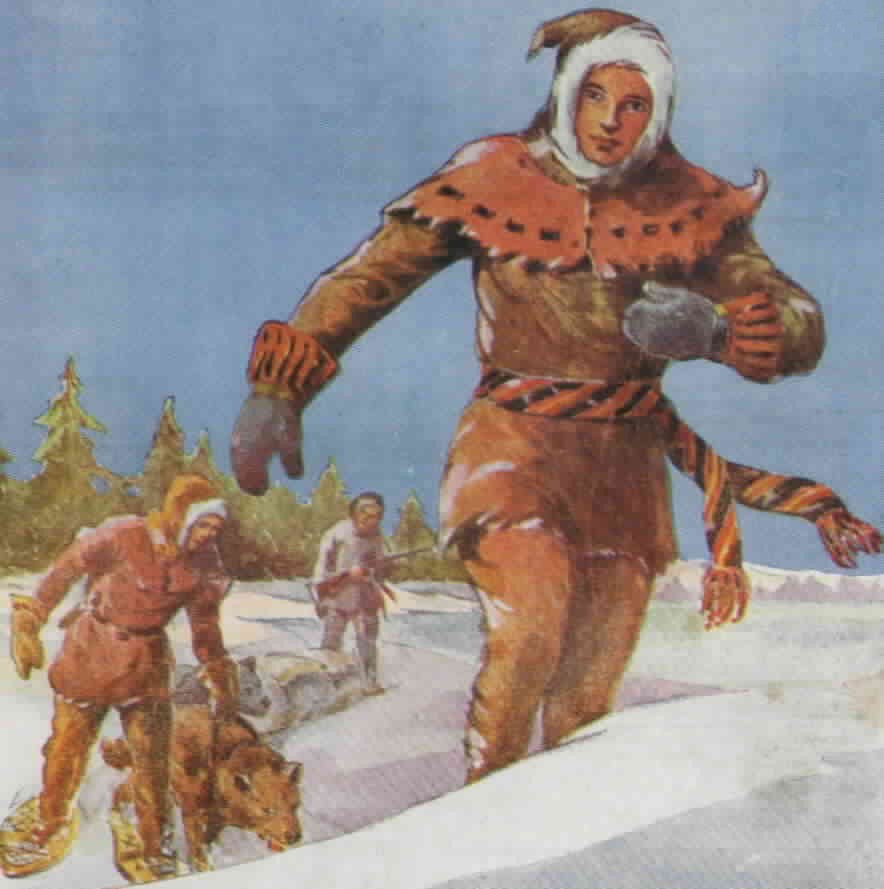 |
The Cupples and Leon Adventure and Mystery Books for Boys |
|
|
||
| The Cupples and Leon Company published a set of adventure books as the Adventure and Mystery Books for Boys during the 1930s. The set of books consists of a group of unrelated books by several authors. According to the publisher, every page of every story in this group is filled with heart-gripping action and tingling suspense. Any boy who reads one book will want to read them all. While the statement is an exaggeration, the overall meaning accurately describes this outstanding group of books. The quality of the books that I have read in this set far exceeds the quality of the books that I have read in the Cupples and Leon Mystery Stories for Girls series. | ||
|
An advertisement found in the back of South from Hudson Bay lists eight titles in this set. The titles of all eight books are provided at the right. I have thus far not tried to track down the final three volumes in the set, so the comments on this page refer only to the five volumes that were written by E. C. Brill and J. A. Lath. |
|
|
|
Each of the three books by E. C. Brill is a complete story in itself with different characters from the other two volumes. All three Brill books are set in Canada. The Secret Cache and The Island of Yellow Sands are set at Lake Superior in the late 1700s and early 1800s. South from Hudson Bay is set in 1821 in the prairie between Hudson Bay and Lake Winnipeg and between Lake Winnipeg and the Mississippi River in what is now Minnesota. The Brill books are very informative about the way the settlers lived at the turn of the 19th century. Brill's characters struggle constantly for survival in the harshest of conditions and must protect themselves from attack by unfriendly settlers and aggressive Indians. Brill's stories tend to have little dialogue and a large amount of descriptive text. Each of Brill's books have a word count of around 250 words per page and a page count of slightly more than 300 pages, making them longer than other books reviewed on this site. The two books authored by J. A. Lath contain the same characters, and the events from The Cortez Emerald Mystery occur as a result of the events from The Lost City of the Aztecs. The Lath books contain all of the usual elements found in the average series books, such as the fat friend, humor, and exciting adventures. The Lath books are set in the time the books were published, the 1930s. The Lost City of the Aztecs feels a lot like science fiction, although it does not strictly fit the definition of science fiction. The events that occur in the book are fantastic, and part of the pleasure comes from not knowing what the boys will find at the site of the lost city. Caution should be used when reading advertisements for The Cortez Emerald Mystery, because the publisher spoils the events of The Lost City of the Aztecs in those ads. I have been very careful on this page not to spoil anything in my summary of either book. The Cortez Emerald Mystery can be summarized without spoiling the previous book, and I cannot understand why the ads for the book were written the way they were. | ||
|
|
||
|
The Secret Cache
1932 by E. C. Brill |
||
|
It is the early 1800s at Lake Superior. 16 year old Hugh Beaupré receives a message informing him that his father has died—a father whom Hugh barely knew. The letter is from Hugh's half brother, whom Hugh never even knew existed. Blaise Beaupré's letter requests that Hugh meet him so that the two might search for their father's inheritance, a parcel of furs that he hid shortly after he was injured. Filled with mixed emotions, Hugh travels across Lake Superior to meet with Blaise. The boys' relationship is strained, but through shared hardship and a common goal, the boys gradually grow closer. The boys soon learn the identity of the man who is responsible for Jean Beaupré's death—a renegade Indian by the name of Ohrante. |
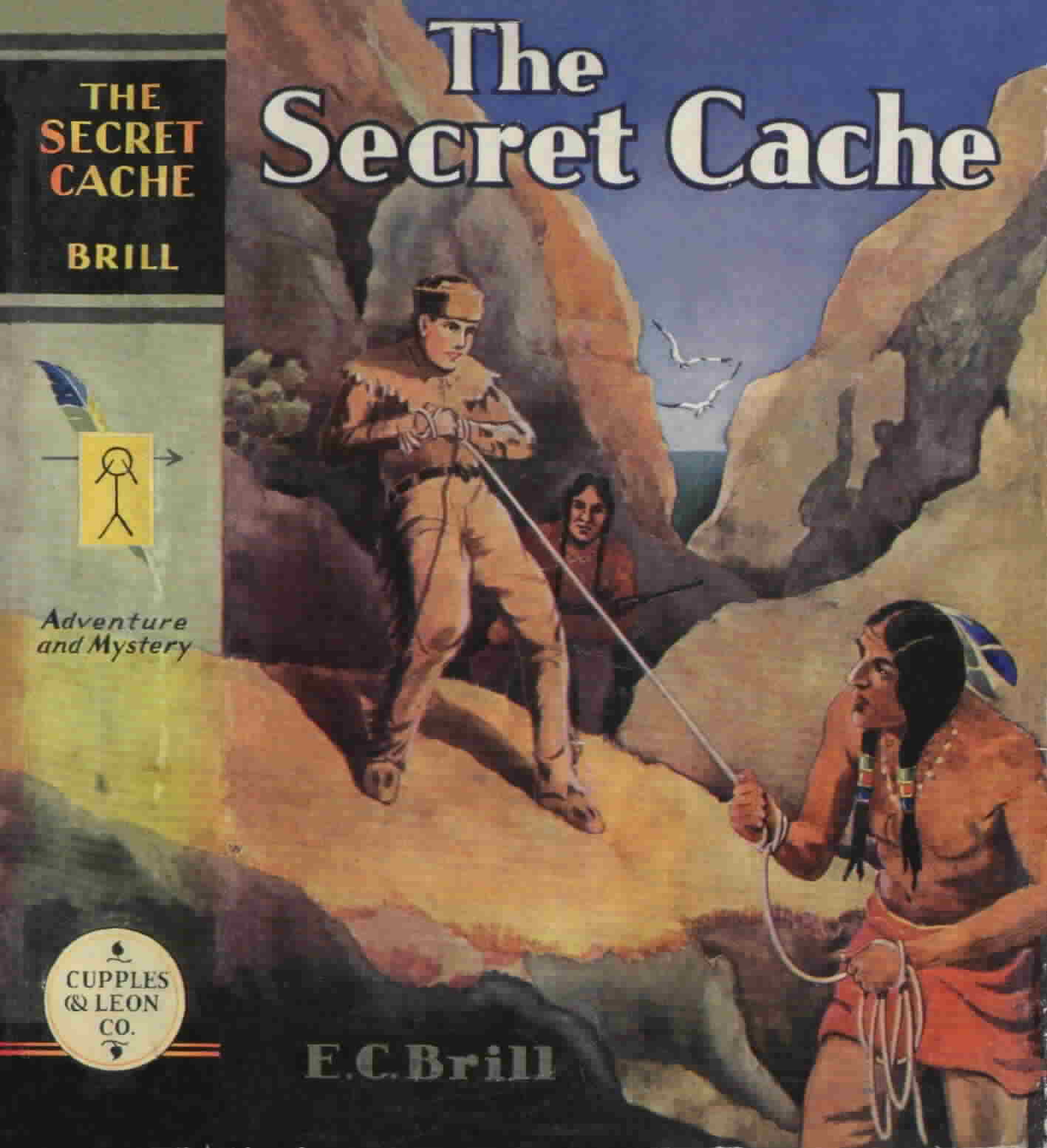
|
|
| Ohrante is a cruel and likely insane man who has a band of Indian followers, and their favorite recreational activity is torturing and killing unfortunate captives. As the boys search for the cached furs, they encounter Ohrante, and Hugh is captured. How Blaise frees Hugh and how the boys fulfill their father's last wish, bringing happiness to an old friend of Jean Beaupré in an unexpected fashion, will thrill readers to the end. | ||
|
|
||
|
South from Hudson Bay
1932 by E. C. Brill |
||
|
A party of Swiss immigrants arrive in Canada in 1821, bound for the River Red Country. Promised lush, fertile lands, the immigrants are disappointed in the flat, desolate prairie that stretches as far as the eye can see. The immigrants face one hardship after another as they make the difficult journey upstream to the settlement. Walter Rossel, a 16 year old lad, makes friends with Louis Brabant, a Canadian, and Neil McKay, a Scotch immigrant. Walter also acquires an enemy in Black Murray, after Walter intervenes when Murray harasses another settler. There is very little food in the new settlement, and after the young men learn of better land to the south near the Mississippi River, they decide to travel south to investigate. Walter, Louis, Neil, and the entire Brabant family make the journey. |
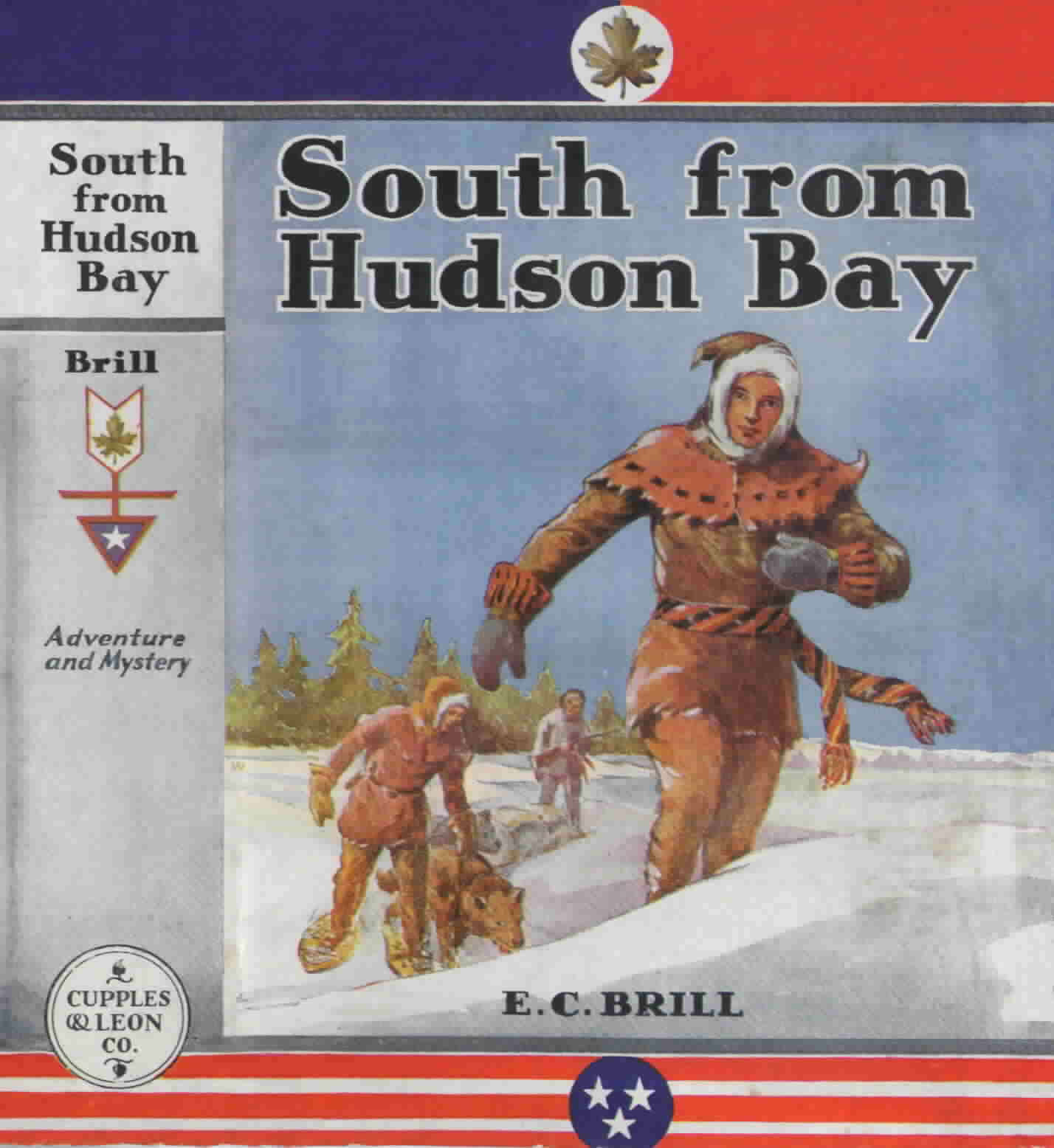
|
|
| The settlers are plagued by adverse weather conditions and by the constant threat of unfriendly Indians. During their travel, the settlers encounter Murray again and realize that the man has evil intentions and will stop at nothing to further his own interests. The settlers face certain death unless they can outsmart Murray and reach their destination before Murray catches up with them. | ||
|
|
||
|
The Island of Yellow Sands 1932 by E. C. Brill |
||
|
It is the 1790s at Lake Superior. Jean Havard and Ronald Kennedy work for the Northwest Fur Company. Jean meets an old friend, an Ojibwa Indian by the name of Nangotook, who is indebted to Jean's father for a previous act of kindness. The boys mention how much they hate working for the fur company and how they hate the tactics used to trick the Indians out of their furs. The boys mention how much they would like to find gold so that Jean can help his father and so that Ronald, who is an orphan, has a means of support. Nangotook tells a story about the Island of Yellow Sands, where gold can be found on the beach. Nangotook's grandfather has seen it, and Nangotook believes he can find it. Nangotook agrees to lead the expedition to the island. |
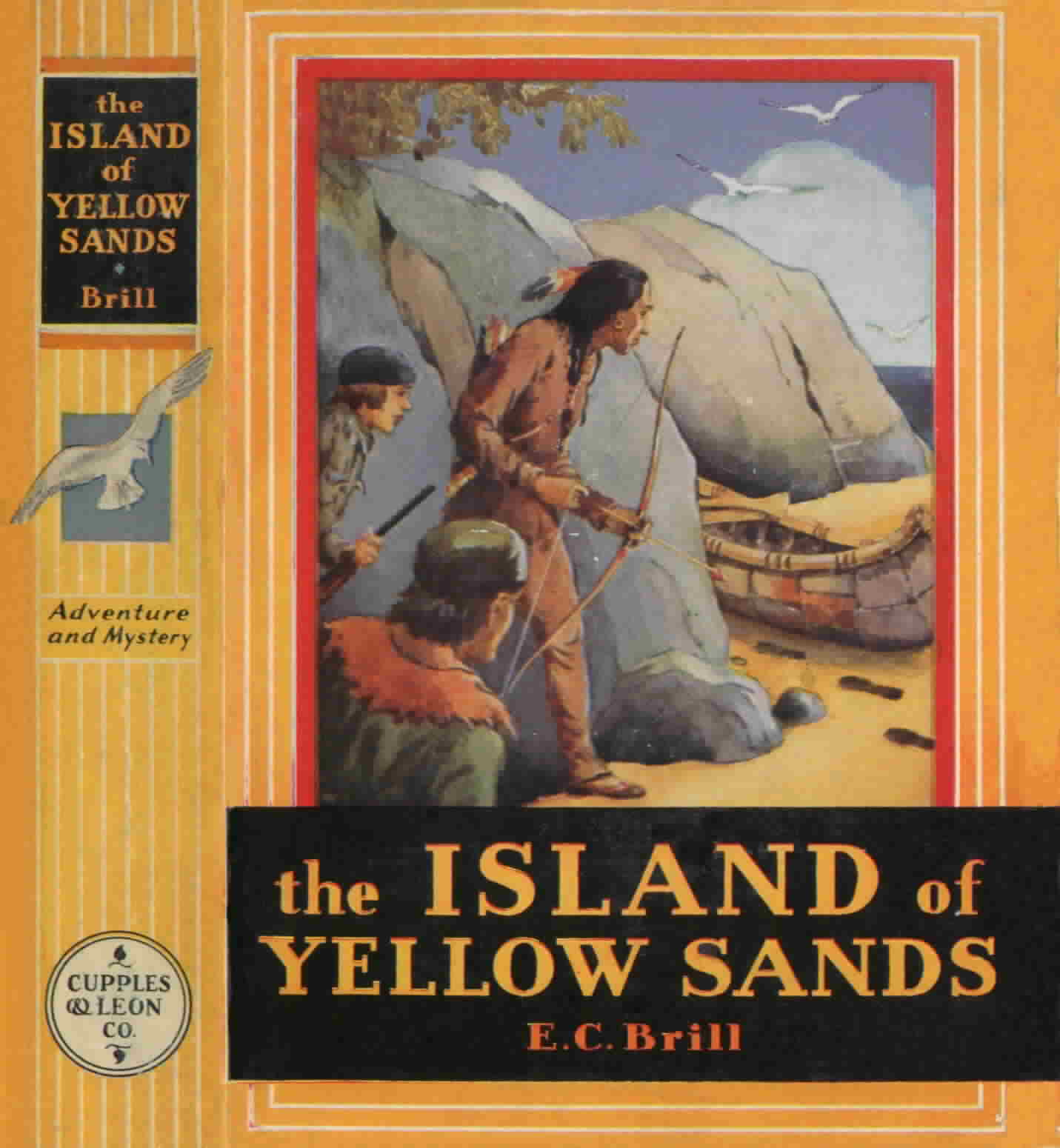
|
|
| The boys face hardship during every step of their journey. Excellent progress is made at first, but multiple storms cause the loss of the boys' food and Nangotook's canoe. A crude raft is built and the boys reach an island upon which they find suitable wood for a canoe. As the journey continues, the boys lose their way in a thick fog. Even worse, an old enemy, Le Forgeron Tordu, appears to be following the boys. Will the boys ever reach their destination? Is the Island of Yellow Sands merely a legend—or does it actually exist? | ||
|
|
||
|
The Lost City of the Aztecs 1934 by J. A. Lath |
||
|
Ralph Hudson, son of explorer William R. Hudson, has found a mysterious message and a strange cipher in an old book about the Aztecs. With the help of his friends, Dick, Flix, and Fred, Ralph decodes the cipher. The cipher gives directions to a lost Aztec city located in a dormant volcano somewhere near the Arizona border with Mexico. The four chums plan a trip to find the lost city. A neighboring rancher, Rodriquez, overhears the boys discussing their discovery. Rodriquez tries to buy the book and its contents at a high price, but Ralph refuses. Later, the boys are held up on the road and narrowly escape, and an intruder breaks into Dick's home and tries to steal the cipher. Why is the cipher so important? |
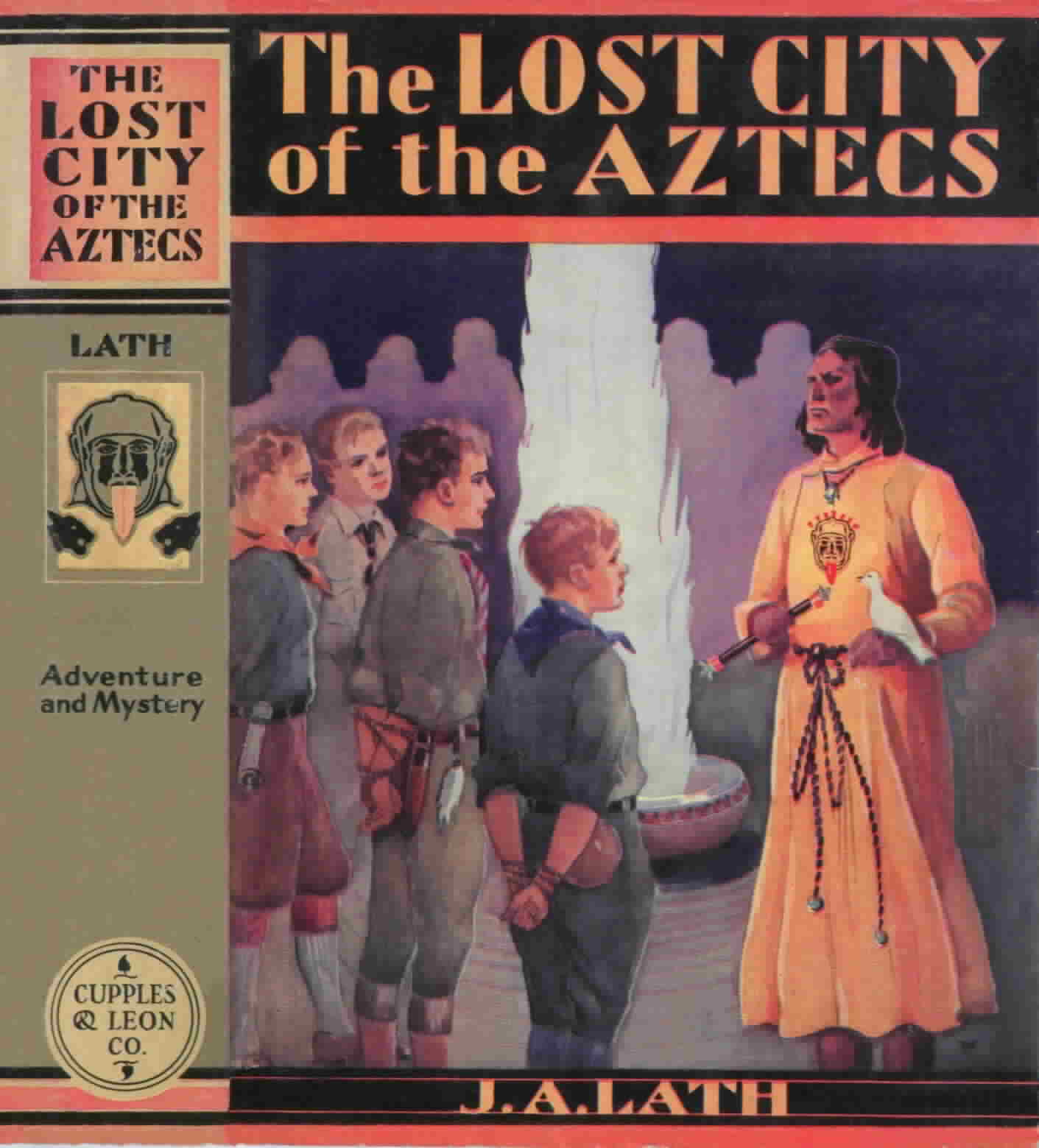
|
|
|
The boys depart on their quest in high spirits. During their journey, two different strangers warn the boys about the Curse of the Sun God, which will strike if the boys continue their journey. Although the boys are not in the least bit superstitious, they cannot help but feel uneasy. Finally, the boys reach their destination and what they discover far exceeds their wildest expectations. In a forbidden land haunted by ancient rituals, the boys face the greatest danger of their lives—can they escape alive? |
||
|
|
||
|
The Cortez Emerald Mystery 1935 by J. A. Lath |
||
|
Dick, Fred, and Flix visit Ralph at Rollston College. Shortly after the boys arrive, an intruder breaks into the Aztec exhibit at Rollston College and steals a valuable emerald. Dick and Ralph eavesdrop upon the men as they steal the emerald but are forced to run when discovered. In a stroke of bad luck, Dick and Ralph hide in the thieves' car. The thieves drive away, unaware that Dick and Ralph are in the car. Meanwhile, Fred and Flix become concerned after learning of the robbery and of Dick and Ralph's disappearance. The friends are greatly relieved after receiving a telegram explaining what happened and that Dick and Ralph were able to escape. Dick and Ralph continue to trail the thieves while Fred and Flix fly to California to join them. |
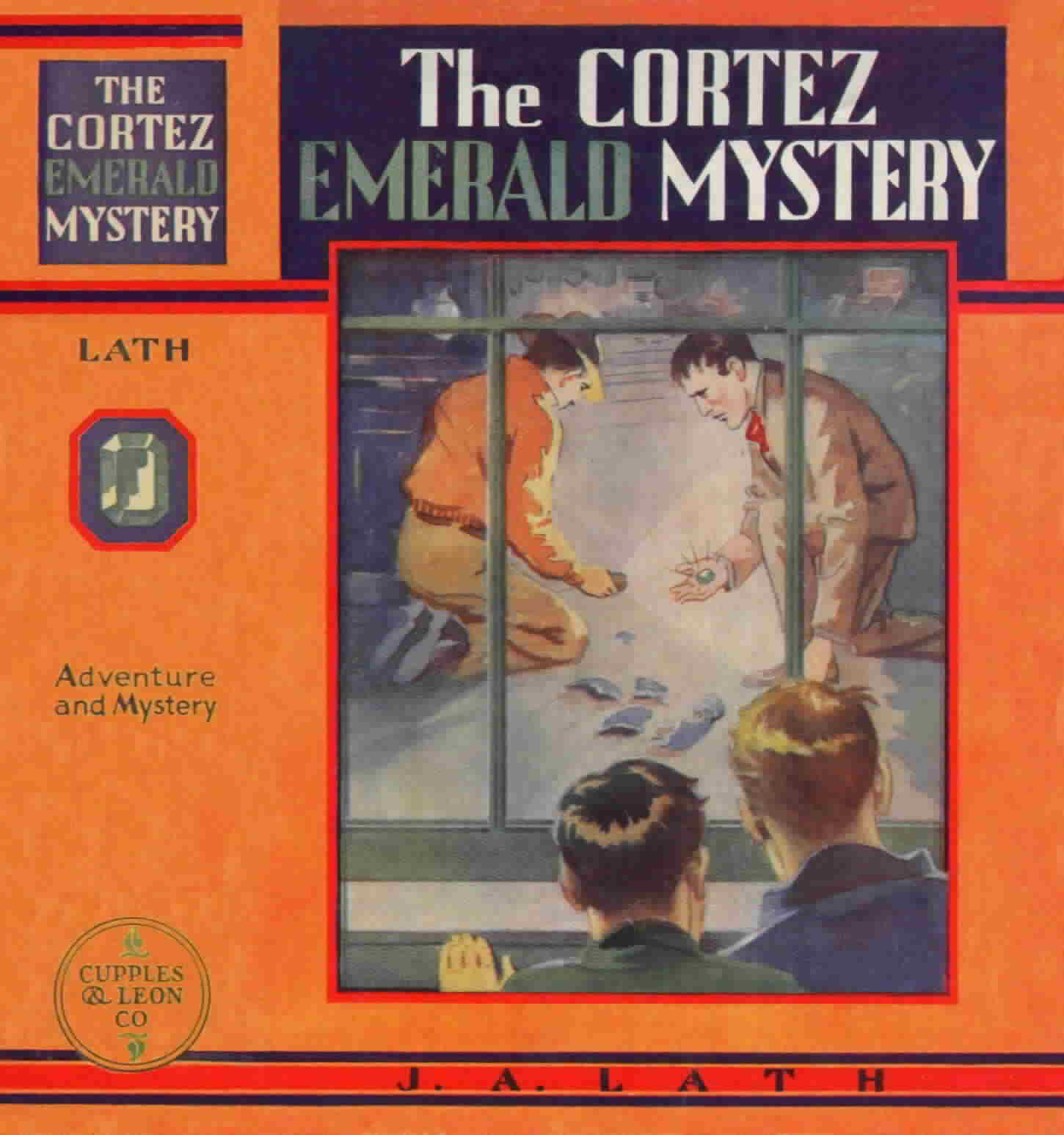
|
|
| Unfortunately, Dick and Ralph are captured again. Fred and Flix locate Dick and Ralph, but they, too, are captured. The boys are at the mercy of their captors and fear that they will be taken out of the country, never to be seen again. | ||
|
|
||
| Back to Main Page | ||